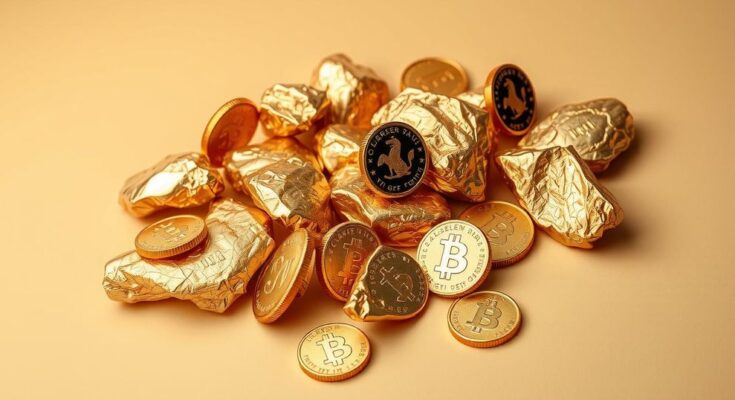On March 19, gold prices in the UAE remained stable, with 1 gram priced at 358.53 AED and a tola at 4,181.86 AED. Geopolitical tensions and U.S. economic policies are influencing market caution. Gold is viewed as a safe haven, with increased demand from central banks amid potential interest rate cuts from the Federal Reserve.
On March 19, gold prices in the United Arab Emirates showed minimal fluctuations, as reported by FXStreet. The price per gram stood at 358.53 AED, a slight increase from the previous day’s rate of 358.33 AED. Furthermore, the price for gold per tola was stable at 4,181.86 AED compared to 4,179.50 AED observed the day before.
The gold prices in UAE are displayed in various unit measures: 358.53 AED for 1 gram, 3,585.33 AED for 10 grams, 4,181.86 AED for a tola, and 11,151.62 AED for a troy ounce. Recent market trends indicate a cautious approach from gold price bulls, primarily driven by political instability in the Middle East and ongoing economic policies that could affect investor behavior.
The demand for gold has surged, reaching record highs near the $3,039 mark on Tuesday due to escalating tensions and concerns regarding US economic policies. The Israeli airstrikes in Gaza and the potential imposition of new tariffs by US President Donald Trump have contributed to market uncertainties, intensifying gold’s appeal as a safe-haven asset.
As speculation grows about the Federal Reserve’s potential interest rate reductions in response to economic downturn fears, traders anticipate possible cuts of 25 basis points in upcoming meetings. This anticipation tends to support gold prices, as lower interest rates enhance gold’s attractiveness amid economic uncertainty.
Gold has historically served as a key asset, functioning as a store of value and a hedge against inflation. Central banks are significant gold holders, with emerging economies like China, India, and Turkey increasing their reserves to bolster economic stability. In 2022, central banks acquired 1,136 tonnes of gold valued at approximately $70 billion, marking a record increase in reserves.
The price of gold is affected by various factors, including geopolitical tensions and the performance of the US dollar. A decline in the dollar generally leads to an increase in gold prices, reinforcing its status as a reliable investment during market fluctuations. Gold tends to rise with lower interest rates and falter with higher rates, maintaining an inverse relationship with riskier assets.
In conclusion, the gold market remains stable amidst geopolitical tensions and economic uncertainties. With current prices reflecting slight increases, the market is closely monitoring the Federal Reserve’s decisions, which may further influence gold’s trajectory. Overall, gold continues to play a vital role as a hedge against financial insecurity and inflation, demonstrating its enduring value in modern economies.
The gold prices in the United Arab Emirates have remained stable, exhibiting only minor fluctuations as of March 19. Significant geopolitical developments and potential shifts in U.S. economic policy are contributing to the cautious behavior of investors. Gold continues to be viewed as a safe-haven asset, and its relationship with the U.S. dollar remains pivotal in determining its market dynamics. As central banks expand their gold reserves, the precious metal’s role as a hedge against economic unpredictability is increasingly reaffirmed.
Original Source: www.fxstreet.com




